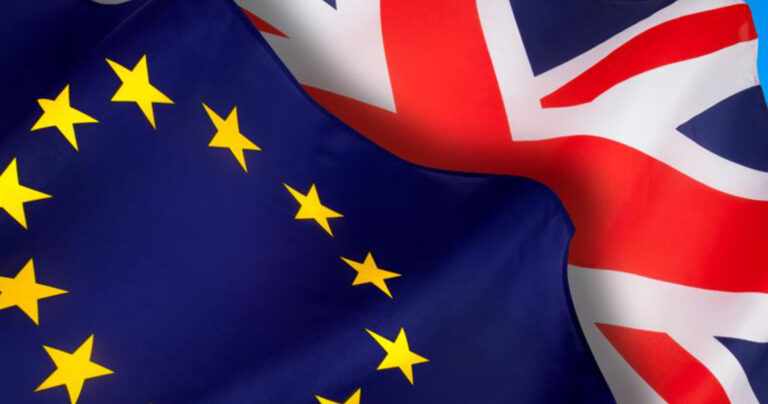Are you ready for a fascinating journey into the world of finance? Today, let’s explore a topic that impacts global trade and commerce – The Factors That Affect the Pound to INR Exchange Rate. The exchange rate between two currencies is a crucial component of international trade, and understanding what influences it can help businesses and individuals make better-informed decisions when investing in or trading currencies. In this discussion, we will be diving deep into the various economic, political, and social factors that can impact the exchange rate between the Pound and the Indian Rupee. So, if you’re curious about how the value of these currencies is determined, fasten your seatbelt, and let’s get started! You Check the current Pound to INR exchange rate on Xmonies here.
The exchange rate between the Pound and the Indian Rupee is constantly fluctuating, and there are many factors at play that can cause it to rise or fall. For instance, economic indicators such as inflation rates, interest rates, and GDP can have a significant impact on the exchange rate between these two currencies. Political factors such as government policies, political stability, and geopolitical tensions can also affect the exchange rate. Social factors, such as consumer spending habits, can also influence the exchange rate. By understanding these factors and how they interact with one another, businesses and investors can make more informed decisions about their currency exchange transactions. Here is an insight into the impact of remittances on the value of a country’s currency.
What is Exchange Rate:
The value of one country’s currency in relation to another country’s currency is referred to as the exchange rate. It determines the purchasing power of a currency in the global market, and it plays a significant role in international trade and commerce. When a country’s currency is in high demand, its exchange rate will increase, and the currency will become more valuable. Conversely, when a currency is not in high demand, its exchange rate will decrease, and the currency will be less valuable. Exchange rates are determined by market forces of supply and demand, and they can be affected by a variety of factors, such as interest rates, inflation rates, government policies, geopolitical tensions, and more. Understanding exchange rates and what factors impact them is crucial for anyone interested in the world of finance and global trade.
Factors that influence the British Pound:
As with any currency, there are numerous factors that can impact the value of the British Pound in the global market. These factors range from economic indicators like inflation rates and interest rates to political factors like government policies and social factors such as consumer spending habits. Understanding the factors that can influence the value of the British Pound is essential for anyone looking to invest or trade in the currency, as well as for businesses engaged in international trade. In this discussion, we will be exploring the various factors that can impact the value of the British Pound and analyzing how they interact to determine the currency’s value in the global market.
- Price and inflation are important factors that greatly influence the value of the British Pound (GBP) in the global market. Generally, countries with high inflation levels relative to other countries will see their currency value depreciate more compared to others. Central banks usually take action such as adjusting interest rates to control these effects caused by inflation. The Consumer Price Index (CPI), which measures the change in prices of goods and services consumers buy at a particular time, is produced by the Office for National Statistics and is used by merchants to track the rate of inflation in the UK. Additionally, the Producer’s Price Index (PPI) is also useful in tracking inflationary changes at the raw material level, which eventually affects consumer prices reflected in the CPI. It is considered by many as a leading indicator of inflation and is released earlier than the CPI, so both reports should be analyzed together for a more comprehensive understanding of inflation levels.
- The Bank of England’s monetary policy significantly affects the value of the GBP by promoting monetary stability through low inflation and currency confidence. The BOE uses various monetary policy tools to control inflation, which traders closely monitor, particularly changes in interest rates. The bank rate indicates the interest rate banks charge each other for balances held at the BOE, which the MPC decides on monthly. The MPC’s official statement on any changes in the rate provides valuable insights into future policy moves.
- The level of economic activity in the UK has an impact on currency values, with GDP being the primary measure. Three types of GDP reports are released: Preliminary, Revised, and Final GDP. Among these, the Preliminary GDP report has the biggest impact despite being the least accurate. Traders also look at more frequent indicators such as retail sales, manufacturing PMI, and services PMI to supplement GDP reports. Retail sales are given more importance as consumers are considered the drivers of economic activity.
Significant historical events have affected the exchange rate between GBP and INR:
There have been several historical events that have significantly impacted on the exchange rate between GBP and INR. For instance, India gaining independence from British rule in 1947 led to a sharp devaluation of the Indian rupee against the pound. Similarly, India’s economic liberalization in the 1990s resulted in increased foreign investment and a strengthening of the rupee against the pound. The global financial crisis of 2008 also had a significant impact on the GBP/INR rate, as investors moved towards safer currencies like the US dollar and away from riskier assets like the Indian rupee.
- Withdrawl from EU in 2016: Since 1973, Britain had been a member of the European Union (EU) but did not want to adopt the Euro as its national currency due to the importance of the pound to the country’s identity. The issue was resolved when a Brexit referendum was held in 2016, with 52% of voters in favor of the UK leaving the EU. Following the Brexit vote, the pound’s value dropped significantly, reaching a 31-year low of $1.32. Currently, the long-term implications of Brexit remain unknown due to insufficient data.
- COVID-19 Pandemic Outbreak: The global Covid-19 pandemic resulted in significant job losses and economic disruption across various sectors worldwide. The UK’s economy was not immune to the pandemic’s impact, with trade being negatively affected. As a result, the value of GBP fell to its lowest level since 1985, with 1 pound being valued at USD 1.39.
- Financial Crises Globally 2008: The 2008 global financial crisis triggered a severe economic downturn in the UK, which was caused by various factors such as inadequate financial regulation and risky investment decisions. The crisis had a damaging impact on the UK’s economy, with retail sales experiencing a significant decline. The housing market also collapsed, leading to major property developers announcing cutbacks to prevent losses. In 2009, the British Pound reached its lowest value against the USD in 24 years, with £1 being equivalent to $1.35.
- Split-up of Bretton Woods System in 1971: During the 1970s, the UK’s economy was plagued by high inflation rates, which brought economic growth to a halt. Matters worsened with the collapse of the Bretton Woods System, a global currency exchange regime that fixed the US dollar to gold. When President Richard Nixon invalidated the convertibility of USD to gold due to trade deficit and economic hardship faced by the US, the indirectly gold-backed pound sterling faced instability as GBP was pegged to the US dollar under the agreement. After the US abandoned the gold standard, the GBP became a free-floating currency and remained stable for a while. However, runaway inflation threatened its sustainability, leading to significant fluctuations against the USD. In 1985, the pound sterling plummeted to £1, being valued at USD 1.05.
- 1967, Pound in your pocket” devaluation: Prime Minister Harold Wilson oversaw the 1967 devaluation of the “pound in your pocket” in an effort to spur economic development. Unfortunately, the move proved to be a failure for the nation. Wilson addressed the citizens in a live broadcast, assuring them that the upcoming devaluation would not affect the value of their currency. However, the value of the pound decreased by 14%, resulting in 1 pound being worth $2.40.
- 1949, Devaluation of pound: In 1947, the UK’s Labor Chancellor Hugh Dalton presented a budget proposal to reduce inflation and stabilize exchange rates by implementing a deflationary plan to address excessive debt and improve trade balance. However, the plan failed to solve the convertibility issues, causing a loss of public confidence, and resulted in a mass migration to the US dollar. Due to the failure of his proposed plan, Dalton was forced to resign from his position. Sir Stafford Cripps announced in 1947 that the pound sterling would undergo a downward adjustment, leading to a devaluation of 30% and causing 1 pound to be equal to $2.80. The International Monetary Fund (IMF) commended this move, as it aimed to stimulate international trade.
GBP and INR relation:
The relationship between the Great Britain Pound (GBP) and Indian Rupee (INR) dates back to the colonial era when INR was pegged to GBP in 1947. At that time, 1 Pound was worth $4.03, while its value against INR was 13.33. However, in 1949, the value of GBP fell to $2.80 due to a devaluation, which led to a slight devaluation of the Indian Rupee, with 1 Pound being equal to INR 13.30. Until 1975, the Indian Rupee was pegged to USD, and further devaluations in GBP did not affect its value. However, in 1993, the Reserve Bank of India (RBI) shifted to a managed floating exchange rate system, allowing market factors to determine the value of INR. This decision was taken to implement a self-governing monetary policy in India.
Conclusion:
The exchange rate between two currencies is determined by various factors, such as economic indicators, political factors, and social factors. These factors interact with one another to influence the value of currencies in the global market. Understanding exchange rates and the factors that impact them is crucial for anyone interested in the world of finance and global trade. In the case of the British Pound and the Indian Rupee, factors such as inflation rates, interest rates, GDP, government policies, political stability, geopolitical tensions, and consumer spending habits can significantly impact the exchange rate between these two currencies. Additionally, historical events such as India’s independence from British rule and the Brexit referendum have also had a significant impact on the GBP/INR rate.






